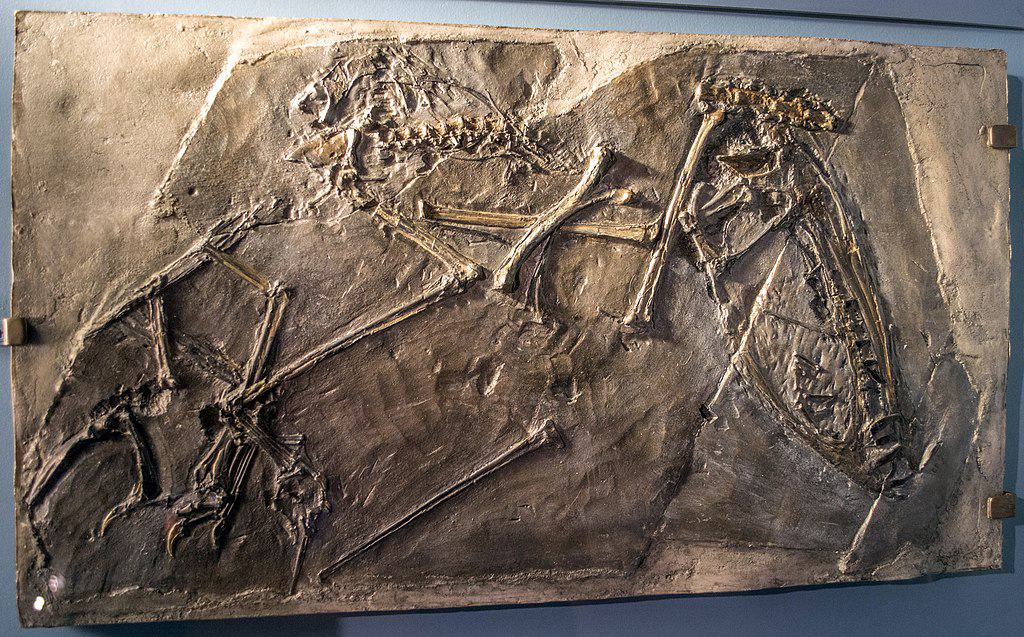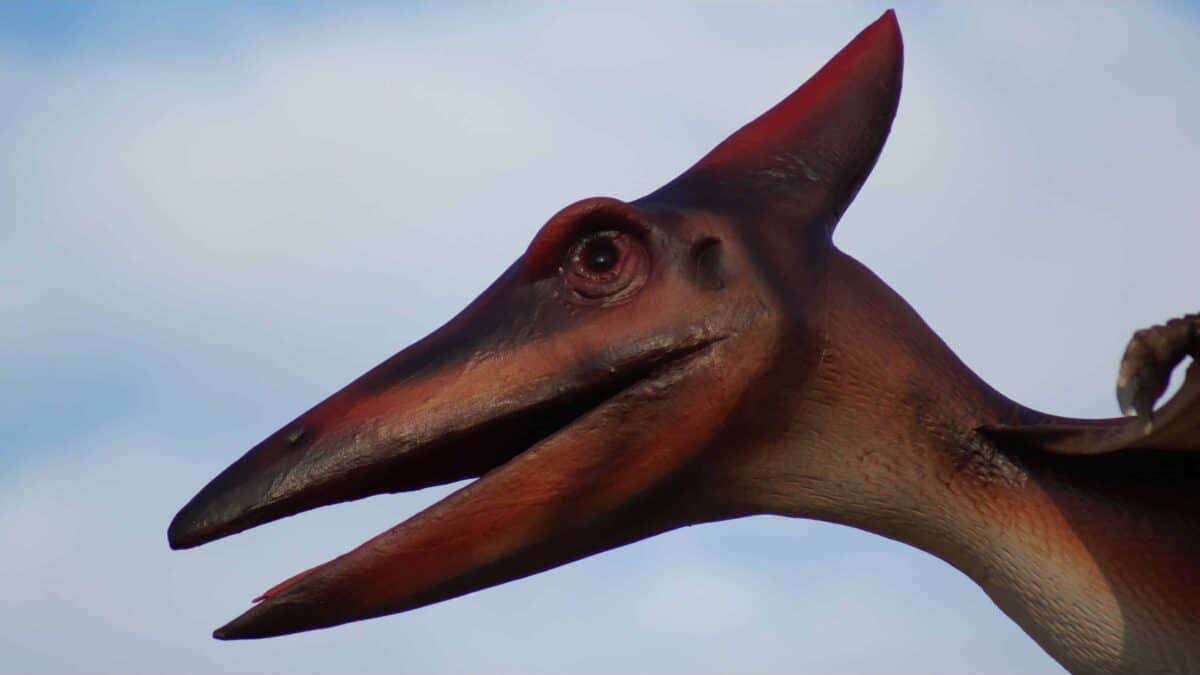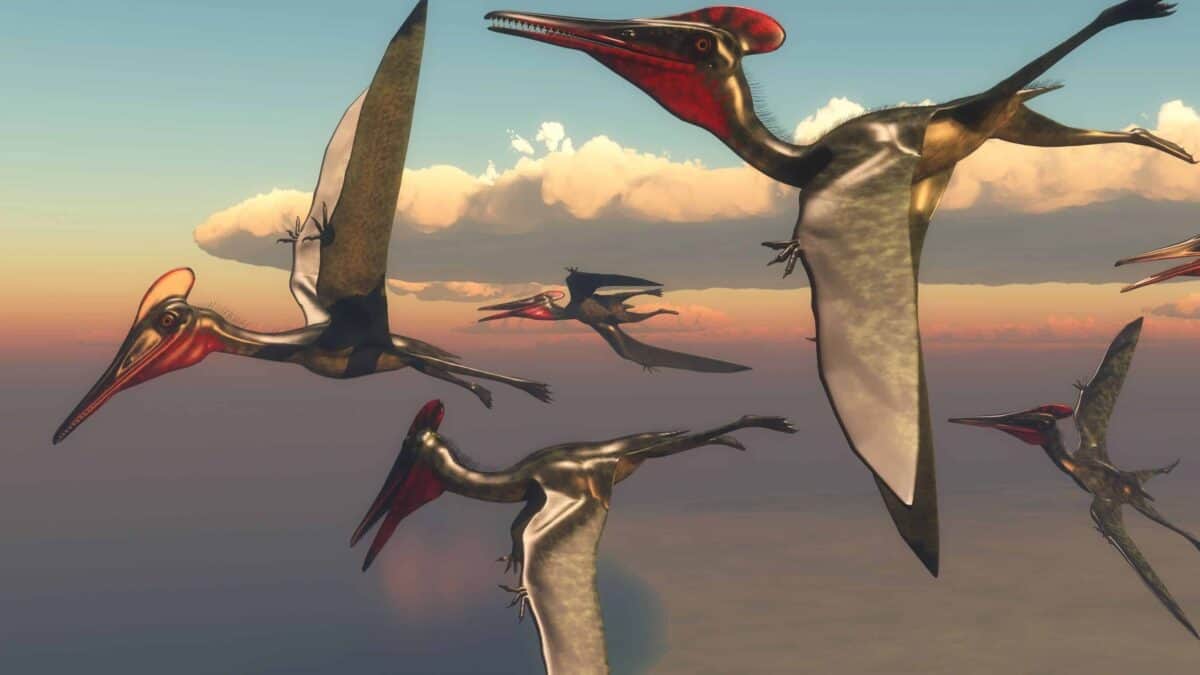When we imagine the prehistoric world of flying reptiles, our modern perspective often leads us to visualize creatures similar to birds. However, recent paleontological discoveries have revealed a fascinating truth: pterosaurs, those magnificent flying reptiles that dominated the skies for over 160 million years, were not adorned with feathers as many might assume. Instead, they possessed a unique body covering more akin to fur. This revelation challenges our understanding of these ancient creatures and provides crucial insights into their biology, evolution, and relationship to other prehistoric species. Let’s explore the compelling evidence behind pterosaurs’ furry coverings and what this means for our understanding of these remarkable animals.
The Discovery of Pterosaur Integument

The first evidence of pterosaur body coverings emerged in the late 20th century, but it wasn’t until the exceptional fossil discoveries in the Jehol Biota of northeastern China that scientists gained a comprehensive understanding of pterosaur integument. These remarkably preserved specimens revealed impressions of soft tissues, including body coverings that had never been clearly observed before.
Unlike the scaly skin of their dinosaur contemporaries or the feathered bodies of early birds, pterosaurs displayed something entirely different: a covering of hair-like structures that paleontologists now call pycnofibers. These discoveries fundamentally shifted our understanding of pterosaur appearance and biology, suggesting these creatures had a more mammal-like external covering rather than the reptilian scales many had assumed.
What Are Pycnofibers?

Pycnofibers represent the unique integumentary covering of pterosaurs. The term comes from the Greek “pycno” meaning dense or thick, and “fibers” describing their filamentous structure. Unlike true mammalian hair or avian feathers, pycnofibers were simple, unbranched filaments that covered much of the pterosaur’s body. These structures ranged in length from a few millimeters to several centimeters, varying by species and body region.
Microscopic examination reveals they were hollow, tubular structures that emerged directly from the skin, creating a fuzzy or fur-like appearance. While superficially resembling fur, pycnofibers evolved independently from mammalian hair through convergent evolution, where similar adaptations develop separately in unrelated lineages facing comparable environmental challenges.
Distinguishing Pycnofibers from Feathers

The distinction between pycnofibers and feathers lies in their structure and development. Feathers, even in their most primitive forms, exhibit branching structures and develop from follicles with specialized cellular mechanisms. They typically feature a central shaft (rachis) with barbs extending outward, often with further branches called barbules. Pycnofibers, by contrast, are simpler, unbranched filaments without the complex hierarchical structure of feathers.
They lack the central shaft, barbs, and barbules characteristic of even the most primitive true feathers. This fundamental structural difference provides clear evidence that pterosaur coverings were not feathers but rather a convergently evolved type of filamentous integument. The developmental pathways that produced pycnofibers appear to be distinct from those that generate feathers in birds and some non-avian dinosaurs.
Evidence from Exceptional Fossils

Several remarkable fossil discoveries have provided crucial evidence for pterosaur fur-like coverings. The Rhamphorhynchoid pterosaur Sordes pilosus, whose name literally means “hairy devil,” preserved in Late Jurassic deposits from Kazakhstan, was among the first to clearly show evidence of pycnofibers. Later discoveries, including specimens of Jeholopterus from China’s Tiaojishan Formation, preserved exceptional details of these filamentous structures.
The Jurassic pterosaur Pterorhynchus from the Daohugou Beds of Inner Mongolia showed pycnofibers covering its wing membranes and body. Perhaps most impressive are Brazilian pterosaur specimens from the Crato Formation, where mineralization processes preserved pycnofibers in three dimensions, allowing scientists to study their structure with unprecedented detail. These fossils consistently reveal simple, unbranched filaments rather than complex feather structures.
The Evolutionary Origins of Pycnofibers

The evolutionary origin of pycnofibers remains a subject of scientific debate. One hypothesis suggests they evolved from modified reptilian scales, similar to how feathers are thought to have developed in dinosaurs. Another possibility is that they represent a completely novel development unique to the pterosaur lineage.
Some researchers propose that pycnofibers and early feathers might share a distant common ancestral structure from early archosaurs (the group containing dinosaurs, pterosaurs, and crocodilians). Recent analyses of pterosaur skin suggest that pycnofibers may have evolved from the epidermis through mechanisms distinct from both mammalian hair and dinosaurian feathers. This would represent a remarkable case of convergent evolution, where similar structures evolved independently in different lineages due to similar selective pressures.
Thermal Regulation Benefits

The primary function of pterosaur pycnofibers was likely thermoregulation. As active flying animals with potentially elevated metabolic rates, pterosaurs would have needed mechanisms to maintain stable body temperatures. The furry covering would have provided insulation, trapping a layer of warm air next to the skin to reduce heat loss—particularly important for animals that experienced rapid cooling while flying.
This insulation would have been especially crucial for smaller pterosaur species and juveniles, which have higher surface-area-to-volume ratios and lose heat more quickly. The fossil record suggests that pycnofiber density varied between species and likely correlated with their habitat and lifestyle. Arctic or high-altitude pterosaurs may have evolved denser pycnofiber coverings, while species from warmer climates might have had sparser coverage, similar to the variation seen in mammalian fur across different environments.
Aerodynamic Advantages

Beyond thermoregulation, pycnofibers likely provided aerodynamic benefits to pterosaurs. Modern research on aircraft and flying animals has demonstrated that surface texture can significantly affect air flow characteristics. The presence of pycnofibers on pterosaur wing membranes might have reduced drag by disrupting the formation of turbulent boundary layers, similar to how the serrated leading edge of owl wings contributes to their silent flight.
Some well-preserved fossils show that pycnofibers on the wing membranes were oriented in specific directions, suggesting they may have helped control airflow across the wing surface. Additionally, these filaments could have provided tactile feedback about air movements, essentially functioning as primitive air-speed sensors that helped pterosaurs adjust their flight dynamics in changing conditions.
Color and Display Possibilities

The coloration of pterosaur pycnofibers remains largely speculative, but recent advances in paleontology provide some clues. Studies of fossilized melanosomes—cellular structures containing pigments—in exceptionally preserved specimens suggest that some pterosaurs had colored pycnofibers. Unlike the vibrant, iridescent feathers of many birds, pterosaur coloration was likely more subdued, consisting primarily of blacks, browns, and potentially reds derived from melanin pigments.
Some species may have displayed contrasting patterns useful for camouflage, species recognition, or mating displays. The varied pycnofiber lengths in different body regions, particularly around the head and neck in some species, suggests they might have formed crest-like structures used for visual signaling. While we may never know the exact appearance of living pterosaurs, these lines of evidence suggest they were not simply drab, uniformly colored creatures.
Comparison with Dinosaur Integument

The integumentary coverings of pterosaurs and dinosaurs represent fascinating examples of parallel evolution within archosaurs. While some dinosaur lineages developed true feathers—particularly theropods, the group that includes modern birds—others retained scales or developed filamentous structures sometimes called “dinofuzz” or “protofeathers.”
These dinosaurian filaments differ structurally from pterosaur pycnofibers, showing evidence of branching patterns and developmental pathways linked to true feathers. This suggests that the common ancestor of dinosaurs and pterosaurs likely had scaly skin, with filamentous coverings evolving independently in each lineage. The discovery of filamentous structures in both groups initially led to speculation about homology (shared ancestry), but detailed microscopic and developmental analysis now points to convergent evolution as the more likely explanation.
Pycnofibers and Metabolism

The presence of insulating pycnofibers provides indirect evidence about pterosaur metabolism. Insulating body coverings are typically associated with endothermic (warm-blooded) animals that generate their own body heat internally. The energy demands of powered flight already suggest pterosaurs had elevated metabolic rates compared to typical reptiles, and their insulating fur-like covering further supports this hypothesis.
Studies of pterosaur bone microstructure reveal fast growth rates and highly vascularized tissues similar to those of birds and mammals, consistent with endothermy. The combination of these lines of evidence strongly suggests that pterosaurs were not cold-blooded like modern reptiles but maintained relatively high, stable body temperatures through internal heat production. Their pycnofibers thus represent an adaptation to an active, high-energy lifestyle that required efficient thermal regulation.
Pycnofibers in Different Pterosaur Species

The distribution and characteristics of pycnofibers varied considerably across the diverse pterosaur family tree. Early, small-bodied pterosaurs like Rhamphorhynchus appear to have had relatively dense, uniform pycnofiber coverings across much of their bodies. In contrast, some larger pterodactyloid pterosaurs, particularly the giant azhdarchids like Quetzalcoatlus with wingspans approaching 10-12 meters, may have had reduced pycnofiber coverage, possibly limited to certain body regions.
This pattern mirrors what we see in modern animals, where larger species often have less dense hair or feather coverings due to their favorable surface-area-to-volume ratios for heat retention. Some specialized pterosaurs, particularly those adapted for aquatic foraging like Pteranodon, show evidence of water-resistant pycnofibers, potentially with different structural properties than those of land-based species. The variation in pycnofiber morphology and distribution reflects the remarkable ecological diversity of pterosaurs throughout their evolutionary history.
Modern Analogues to Pycnofibers

While pycnofibers have no exact modern equivalent, several living animals possess integumentary structures that provide useful analogies. The most obvious comparison is mammalian hair, which serves similar insulative functions despite its different developmental origin. The simple, unbranched nature of pycnofibers also bears some resemblance to the tactile whiskers (vibrissae) of mammals, though pterosaur fibers were more widely distributed.
Among reptiles, the closest analogue might be the bristle-like projections found on some geckos, which serve both sensory and, in some cases, decorative functions. The independently evolved filamentous structures of some insects, particularly moth setae, represent another convergent solution to similar problems of insulation and fluid dynamics. These modern analogues help scientists reconstruct the appearance and function of pycnofibers, though it’s important to remember that pterosaurs were unique animals without direct modern descendants.
Conclusion: Reinterpreting Ancient Flyers

The discovery that pterosaurs possessed fur-like pycnofibers rather than feathers has fundamentally transformed our understanding of these remarkable flying reptiles. This integumentary adaptation provides valuable insights into pterosaur physiology, suggesting they were likely warm-blooded, active creatures unlike modern reptiles.
The convergent evolution of insulating filamentous coverings across multiple vertebrate lineages—mammals, dinosaurs, and pterosaurs—highlights the strong selective pressures for efficient thermoregulation in active animals with high metabolic demands. As paleontological techniques continue to advance, we can expect further refinements to our understanding of pterosaur appearance, offering increasingly detailed glimpses into a group of animals that ruled the skies for longer than any other vertebrate group in Earth’s history.
- 13 Ways to Keep Your Indoor Cat Entertained - August 17, 2025
- How This Giant Predator Ruled the Ocean 200 Million Years Ago - August 17, 2025
- Pterosaurs Had Fur, Not Feathers - August 17, 2025

